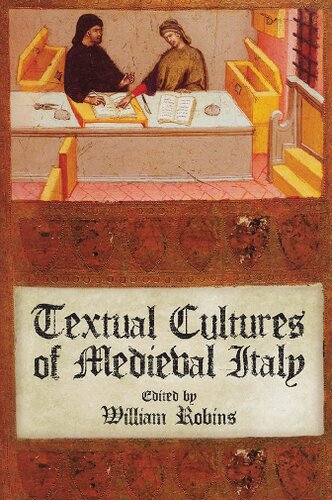

Most ebook files are in PDF format, so you can easily read them using various software such as Foxit Reader or directly on the Google Chrome browser.
Some ebook files are released by publishers in other formats such as .awz, .mobi, .epub, .fb2, etc. You may need to install specific software to read these formats on mobile/PC, such as Calibre.
Please read the tutorial at this link: https://ebookbell.com/faq
We offer FREE conversion to the popular formats you request; however, this may take some time. Therefore, right after payment, please email us, and we will try to provide the service as quickly as possible.
For some exceptional file formats or broken links (if any), please refrain from opening any disputes. Instead, email us first, and we will try to assist within a maximum of 6 hours.
EbookBell Team

4.7
76 reviewsMedieval Italy presented a rich array of discrete textual cultures, many of them specific to particular regions, professions, or groups of writers and readers. The essays in this collection consider how distinct habits of writing took root among specific communities in Italy between the early Middle Ages and the eve of the Renaissance.
In examining how ideological concerns helped give shape to strategies of writing and how forms of communication influenced cultural developments, these case studies assess a wide range of texts, including legal treatises, saintly biographies, rhetorical handbooks, and vernacular poetry. As a whole, the collection makes the case for combining abstract analyses such as textual theory and intellectual history with more technical specialties such as editing and codicology. Rather than approaching pre-modern Italian textuality as something uniform, Textual Cultures of Medieval Italy engages with its fascinating plurality.